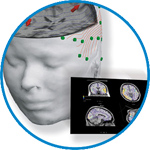- Home
- About ANT
-
Products

asa
asa is a highly flexible EEG/ERP and MEG analysis package with a variety of source reconstruction, signal analysis and MRI processing features.
.jpg)
eego mylab
The new frontier in multimodal brain research. With up to 16 kHz sampling rate, 256 EEG channels and unique software features, eego mylab gives you an unprecedented in-depth understanding of the human brain.

eego sports
eego sports offers complete freedom to collect high-density EEG data, bipolar EMG signals, and a variety of physiological sensor data, wherever and whenever required, with publish quality data in less than 15 minutes!

waveguard net
The waveguard net sets a new standard for research applications requiring high-density EEG data acquisition with quick preparation time, high flexibility, and subject comfort.

visor2
Our new and upgraded visor2 solutions integrate all the latest technologies for navigated rTMS, dual-coil navigation support, EEG-TMS recordings and pre-surgical evaluation for the highest quality in research and clinical procedures.

powerMAG ANT
The PowerMAG ANT 100 rTMS stimulator is designed for the specific needs of high-end TMS applications. Powerful high-frequency TMS as well as high precise single pulse and repetitive pulse protocols are combined in one single device.

xensor
xensor offers the solution for digitization of 3D electrode positions. xensor takes care of the whole procedure; it records, visualizes and stores positions acquired with a dedicated digitizer.

waveguard original
waveguard original is the cap solution for EEG measurements compatible with fMRI, MEG and TMS system. Use of active shielding guarantees performance in even the most demanding environments.

waveguard connect
waveguard connect EEG caps are a perfect match for hospitals and institutes aiming at reliable EEG, maximum uptime and great patient comfort! For optimal signal quality, the electrodes are made of pure, solid tin.

waveguard touch
waveguard touch is a dry electrode EEG cap. The unique Ag/AgCl coated soft polymer electrodes provide stable, research-grade EEG signals while maintaining subject comfort. The combination of these innovative dry electrodes and the industry-leading waveguard cap makes waveguard touch the best solution for dry EEG.

smartmove
smartmove allows planning of a complete TMS session ahead by defining stimulation sites based on anatomical MRI information and functional information like fMRI, PET or EEG/MEG.
Stay - References
- Support
- Events
- News
- Contact Us
You are here
Neural Markers of Performance States in an Olympic Athlete: An EEG Case Study in Air-Pistol Shooting
Neural Markers of Performance States in an Olympic Athlete: An EEG Case Study in Air-Pistol Shooting
This study focused on identifying the neural markers underlying optimal and suboptimal performance experiences of an elite air-pistol shooter, based on the tenets of the multi-action plan (MAP) model. According to the MAP model’s assumptions, skilled athletes’ cortical patterns are expected to differ among optimal/automatic (Type 1), optimal/controlled (Type 2), subop-timal/controlled (Type 3), and suboptimal/automatic (Type 4) performance experiences. We collected performance (target pistol shots), cognitive-affective (perceived control, accuracy, and hedonic tone), and cortical activity data (32-channel EEG) of an elite shooter. Idiosyncratic descriptive analyses revealed differences in perceived accuracy in regard to optimal and suboptimal performance states. Event-Related Desynchroniza-tion/Synchronization analysis supported the notion that optimal-automatic performance experiences (Type 1) were characterized by a global synchronization of cortical arousal associated with the shooting task, whereas suboptimal controlled states (Type 3) were underpinned by high cortical activity levels in the atten-tional brain network. Results are addressed in light of the neural efficiency hypothesis and reinvestment theory. Perceptual train-ing recommendations aimed at restoring optimal performance levels are discussed.
Read the full paper here.

 Read more
Read more.jpg)




